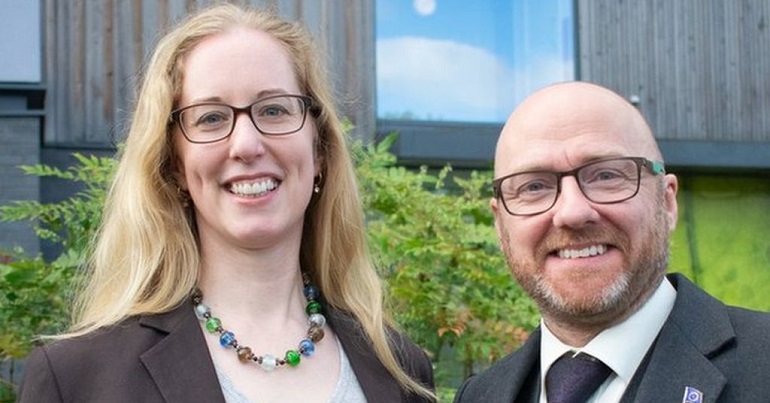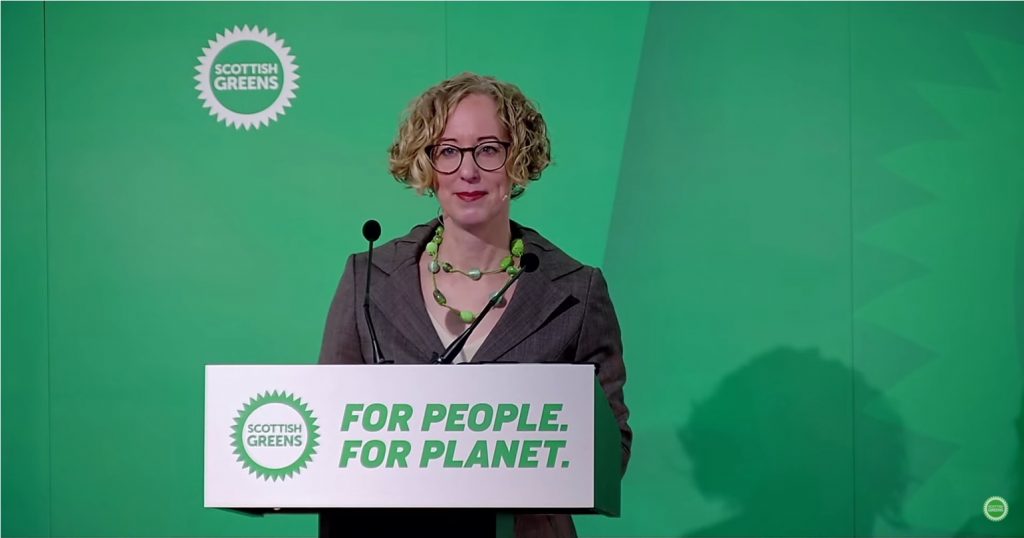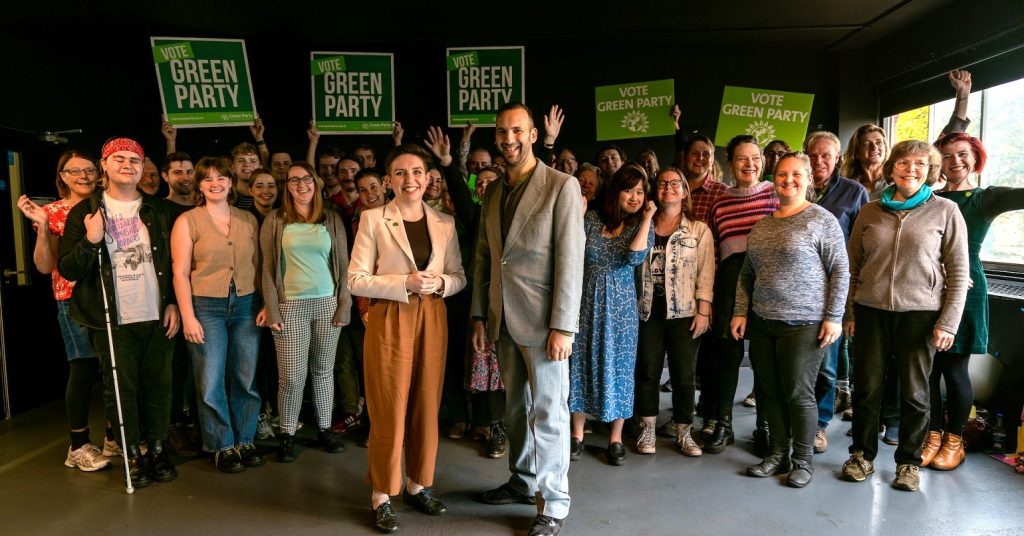The left should coalesce around the Greens in May’s Holyrood election

Keeping an eye on the polls is hard to avoid in this line of work, especially as the Holyrood election approaches. For the last year or so, the polls have projected a narrow SNP majority, which isn’t surprising, with Labour in disarray again and the Tories imposing a chaotic and expensive Brexit on Scotland. The First Minister has also consistently fronted up the pandemic response in Scotland, and it would be hard for anyone to look less compassionate than the Tory ministers doing the same down south.
Another factor sometimes forgotten is that the last Holyrood election was so long ago that Cameron was PM – and about to lead the Remain campaign to an unexpected defeat – which feels like a thousand years ago. The subsequent Tory adoption of a rock-hard Brexit will surely cost them amongst the wealthy Remain-minded middle classes who backed Ruth in 2016.
You might think that the Greens would be getting squeezed in this situation, but pleasingly those same polls have tended to show us winning about ten seats on average.
My suspicion is that people have noticed a dogged and constructive group of MSPs pushing the SNP to be more radical (rather than shouting “SNP bad” at every turn). Some concrete changes won by the Green MSPs seem to have been noticed outside the Holyrood bubble, including lower taxes for the lowest-earning majority alongside higher taxes for the top ten percent, a policy which was in our 2016 manifesto and we delivered. People will have seen that we won more money for public transport and walking and cycling, that we pushed the Scottish Government into banning fracking.
And in the pandemic, people have seen Greens getting evictions banned over winter. We forced the reversal of unfair grades for high school kids that marked them down based on what school they went to.
We won regular COVID testing for care home staff in May, for NHS workers in November and recently we got this assurance for teachers and other school staff too.
When buses become free for everyone under 19, that’ll make a pretty noticeable difference too, and many will be delighted when the current free-for-all on the killing of mountain hares on grouse moors comes to an end, thanks to Alison Johnstone MSP.
In May an SNP majority is not inevitable. That outcome is no better for independence than a Yes majority that requires the Greens as well. And another majority administration is not best for Scotland in terms of governance.
Both Greens and the SNP will go into the election pledging to support an independence referendum during this coming session.
Personally, I think it would be easier for the parties who support the Westminster system to mischaracterise the independence campaign as a solely SNP project if they get an overall majority.
The fact remains that last time many of those who voted for independence were Greens or unaffiliated left voters – not to mention the large number of Labour voters who backed independence. This diversity of opinion is a strength, and that strength will be more obvious if the majority which delivers the second referendum requires our two parties to work together.
In 2014 we only had two Green MSPs available to appear on platforms supporting independence, and no matter how tireless Alison and Patrick are, they couldn’t be everywhere. A stronger Green contingent at Holyrood after May helps us reach parts of the country turned off by the SNP for one reason or another. Some are concerned about ministers’ failure to protect our wildlife, our climate and our wild spaces, for example, while others they think they should have acted decisively to support trans and non-binary Scots, as promised in 2016.
But the next session won’t just be about that independence referendum. It’ll be about how we recover from the pandemic, how that recovery can be as fair and as low-carbon as possible, how we work to eliminate drug deaths, and all the other things which legitimately jostle for political attention.
When the SNP had a majority, from 2011 to 2016, I personally think they got less done than during the periods of minority government before and after that. As a majority they didn’t listen to other parties at all, which led to misguided or weak legislation. During the two minority sessions, however, they had to work with other parties to pass their budgets.
In this session, on issue after issue, SNP Ministers have faced a choice. Work with the Greens and rejig policy towards fairness, or work with the Tories to protect the status quo (especially for landlords, for some reason). Those are moments when political forces outside Parliament can use a Green group holding the balance of power to apply pressure on the SNP: sometimes it works, and then we see policy slowly moving away from the Westminster consensus.
I don’t really hold with encouraging SNP voters to game the system and vote Green on the list, despite the evidence that SNP list votes are likely not to elect a single MSP outside the Highlands and Islands. Our pitch is to all of those on the left who want to move more quickly to an independence with a progressive purpose, and to use the existing powers in a more radical way in the meantime.
A strong Green group, winning seats that would otherwise go to the Westminster parties – and a Yes majority but not an SNP majority – that’s the best way to achieve both of those aims.
PS. We hope you enjoyed this article. Bright Green has got big plans for the future to publish many more articles like this. You can help make that happen. Please donate to Bright Green now.
PPS. Bright Green has an exciting series of events coming up. Join us for debates, interviews and much more.




All power to your elbows, from further South!